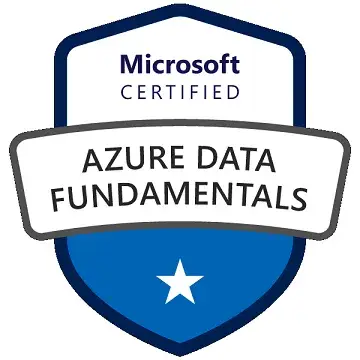Science class 7
-
- 5 rating
- (1 Reviews)
- 0 students enrolled
Science class 7
Class 7 Science aims to build a strong foundation in various scientific principles and concepts. It encourages critical thinking and problem-solving skills while nurturing curiosity and a deeper understanding of the natural wor
-
- 5 rating
- (1 Reviews)
- 0 students enrolled
What learn
- Comprehensive Subject Knowledge
- Visual and Interactive Education
- Adaptive Learning Methodology
- 24/7 Availability
- Global Reach and Diverse Resources
Course Content
Requirements
- Smart Phone Or Laptop with Internet Connection
Description
Here are short descriptions of the chapters you've listed:
1. **Fibre to Fabric - Wool:** This chapter likely focuses on the production of wool, including the rearing of sheep, shearing, processing, and the conversion of wool into fabric.
2. **Motion and Time:** Students will learn about the concepts of motion, speed, and time measurement, including how to calculate speed and understand different types of motion.
3. **Chemical Changes:** This chapter explores chemical reactions, including how to identify them, the substances involved, and the products formed during a chemical change.
4. **Indicators:** Students learn about indicators used to detect acids and bases, such as litmus paper and pH indicators, and how they change color in the presence of different solutions.
5. **Magnetic Effect of Current:** This topic covers the relationship between electricity and magnetism, explaining how electric currents generate magnetic fields.
6. **Acids, Bases, and Salts:** This chapter delves into the properties of acids and bases, their chemical reactions, and their applications in daily life.
7. **Simple Pendulum:** Students study the characteristics and behavior of a simple pendulum, including its motion and factors affecting its oscillations.
8. **Forest Our Lifeline:** This chapter likely discusses the importance of forests, their role in the environment, and conservation efforts to protect them.
9. **Heating Effect of Electric Current:** Students learn about the heat generated by electric currents and its applications, such as in electric heaters and cooking appliances.
10. **Transportation in Plants:** This topic explores how water and nutrients are transported within plants, including through the process of transpiration and the structure of plant vessels.
11. **Physical Changes:** Students differentiate between physical changes (changes in state, shape, or size) and chemical changes (new substances formed) in this chapter.
12. **Respiratory Systems in Organisms:** This section covers the respiratory systems of various organisms, including humans, animals, and plants.
13. **Adaptations of Animals to Climate:** Students study how animals adapt to different climates, focusing on physical and behavioral adaptations.
14. **Heat Effects and Modes of Transfer:** This chapter explains the concepts of heat transfer through conduction, convection, and radiation and their real-world applications.
15. **Weather and Climate:** Students learn about weather patterns, climate zones, and the difference between weather and climate.
16. **Fibre to Fabric - Silk:** Similar to the earlier chapter on wool, this section likely focuses on the production and processing of silk from silkworms.
17. **Nutrition in Plants:** This topic explores how plants obtain and utilize nutrients for growth and development, including photosynthesis and other processes.
18. **Heat:** This chapter delves deeper into the concepts of heat, temperature, and heat transfer, along with the measurement of these parameters.
19. **Reproduction in Plants:** Students study various methods of plant reproduction, including sexual and asexual methods.
20. **Transportation in Animals:** This chapter covers how different animals transport substances such as oxygen and nutrients in their bodies.
21. **Wind, Storms, and Cyclones:** Students learn about atmospheric phenomena, including winds, cyclones, and the factors that influence weather patterns.
22. **Light:** This topic explores the properties of light, including reflection, refraction, and the formation of images.
23. **Nutrition in Animals:** Students study various modes of nutrition in animals, including herbivores, carnivores, and omnivores, as well as the digestive system.
24. **Soil:** This chapter likely covers soil types, composition, and the importance of soil conservation.
25. **Types of Respiration:** Further delves into the different types of respiration, including aerobic and anaerobic respiration.
26. **Water: A Precious Resource:** Discusses the importance of water as a valuable resource, its sources, and conservation efforts.
27. **Water Management:** This chapter likely addresses effective management and conservation of water resources.
Class 7 Science aims to provide students with a comprehensive understanding of scientific concepts related to the physical world, living organisms, and their environment. These topics form the basis for further scientific exploration in higher classes.
Recent Courses
- June, 23rd 2025
- 3
This course plan outlines a comprehensive curriculum for a prompt engineering course, designed to equip learners with the ski..
- 1699.00₹
2000.00₹
- June, 28th 2025
- 12
In an era where technology is seamlessly integrated into our daily lives, understanding the synergy between Embedded Systems..
- 1599.00₹
2000.00₹
- May, 22nd 2024
- 0
Microeconomics is an essential component of economics as a whole, as it helps us understand how individual decisions and inte..
- 799.00₹
999.00₹
About Instructor
"Founded in 2019, Bringup Education stands as a dynamic Ed-Tech firm. We take pride in offering a diverse array of courses, spanning from school-level education to rigorous undergraduate programs, all impeccably facilitated through our state-of-the-art Learning Management System (LMS).
Moreover, at Bringup Education, we are committed to preparing students for the professional world by providing valuable training and internship opportunities. These experiences not only augment students' skills but also ensure they are 'job ready' upon graduation."


.png)




.png)


